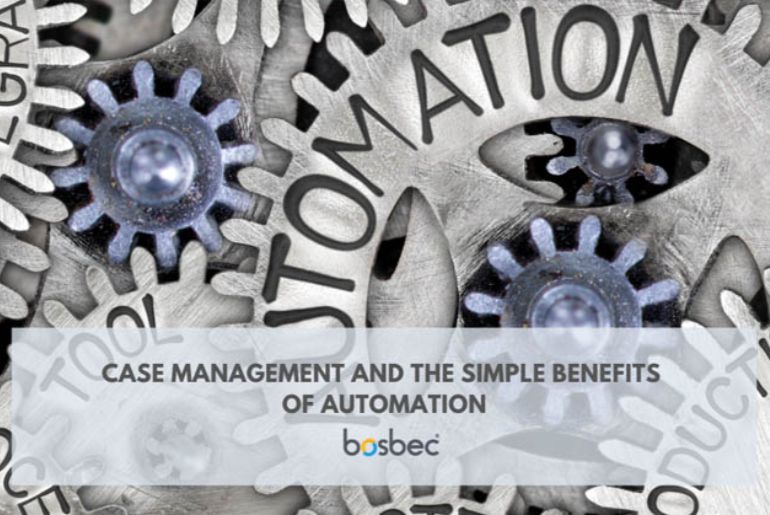How can you create smarter processes in your organisation with the help of case management? How can you eliminate unnecessary procedures by intelligent automation? How do you keep your case management system dynamic to improve efficiency? Whether you have a case management system in place or not, some processes undoubtedly benefit from being automated to save money and time.
First of all – what is case management? Most certainly, you’ve encountered a case management software system in one way or another at your workplace – whether you were aware of it or not. A case management software is simply a digital system that enables organisations to store and track information from an integrated location and report on that data. Client’s information, case notes, client communication, billing, organisational information and so on are saved in the program in order to run workflows, reporting, case intake and other commands. Instead of relying entirely on employees to know how to deal with incoming cases from customers, the processes will run intelligently with streamlined actions based on information gathered in one place – inevitably saving a lot of time while dealing with customer commands on a day to day basis. Implementing a case management system means reduced risks of human error in your organisation, along with greater security, flexibility and a better ability to analyse trends and reporting.
Seeing that the market changes are speeding up in an unprecedented manner – and the customer demands with it – it’s more vital than ever to choose the alternative that allows your organisation to change at the same pace. While case management is an important way to enhance efficiency, it’s equally important that the system can adjust so that the internal processes won’t become a hinder to a smooth-running practice. The system needs to allow swift adjustments to workflows, enable automation in order to save time and money, and allow modifications where needed without fuss.
A simple way towards enhanced efficiency is the elimination of redundant steps by automating processes. In many cases, you already know precisely what to do when a case comes in – why spend unnecessary time registering and administering it? By locating cases that easily could be automated, the workload and time consumption would be lowered per instance. One way to easily incorporate flexible automation is by using a low code platform to design the auxiliary pathways for already existing case management systems or design separate processes for smaller organisations where ad hoc solutions are required.
Even with a case management system in place, manual actions are often required to take the case further or to complete the task. These actions usually mean that crucial time passes unnecessarily, which could be avoided if the task has been automated.
Let’s take a simple example:
A cooling alarm goes off in your local superstore. When the alarm goes, a service technician is needed. The current management system receives the case and requires manual categorisation, analysis and distribution of the job to an available technician that is competent for the reparation. After this process is completed, the technician is sent to the store to fix the issue.
Seeing that the alarm’s response requires the same solution every time, could automate the process to enable a quicker reparation of the broken fridge. A more efficient way in this instance would be to connect the alarm directly to the technicians, that would receive available information automatically from the alarm system. This would enable quicker response times along with a faster resolution to the initial issue – to get the fridge back up and running. By eliminating the steps that easily could be eliminated and cut the need for manual responses will save time, money, and the workload and create a smooth-running organisation that will have a far-reaching impact on the business.
Every company is unique, with unique processes and routines that need to be adhered to enhance efficiency and create a standout experience for customers. It’s essential to have the tools that will enable development rapidly and make the digital journey easier.
Having a low code platform at hand is the simple solution to automate your processes without investing substantial development time or development costs. It’s a tool that can create standalone programs, auxiliary systems to systems already in place, or small solutions that will solve separate processes like the example above.







